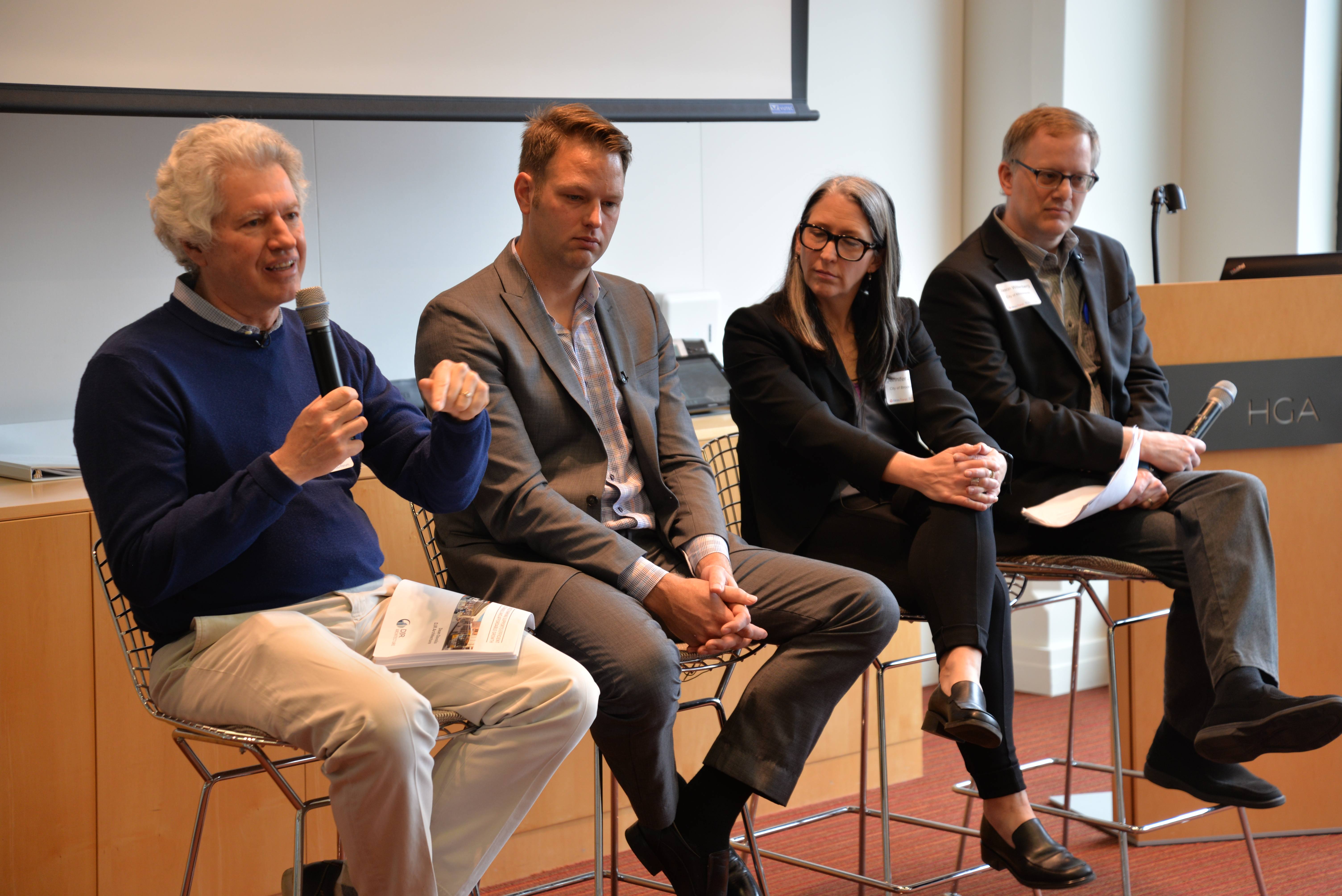 New residential and commercial buildings can increasingly come with little to no parking, developers and city officials said at a forum hosted by Metro Transit’s Transit Oriented Development Office.
New residential and commercial buildings can increasingly come with little to no parking, developers and city officials said at a forum hosted by Metro Transit’s Transit Oriented Development Office.
“Part of the issue is does the public want it and this is very much what the public wants,” said Dean Dovolis, the founder, CEO and principal at Minneapolis-based DJR Architecture, Inc.
Dovolis, above left, spoke at the forum alongside, left to right, Robb Lubenow, co-founder of Minneapolis-based Yellow Tree Development; Jennifer Jordan, Senior Project Manager for the City of Brooklyn Park; and Jason Wittenberg, the Manager of Land Use, Design and Preservation for the City of Minneapolis.
In Minneapolis, DJR is focusing on small lots where multi-story residences can be built with limited parking. On Fremont Avenue South, DJR built a 10-story apartment building with just two parking spaces.
Panelists said one of the biggest benefits to reducing parking in new developments is the ability to provide more affordable housing and commercial space. Each enclosed parking space can cost up to $30,000 to create.
The lack of parking isn’t a deterrent to young adults and others who value living in vibrant, walkable neighborhoods where personal vehicles aren’t a necessity. In lieu of parking, developers are expanding bike facilities and providing vehicles that can be shared by building residents.
“The only thing that’s getting larger is our bike storage and lounges,” said Lubenow, of Yellow Tree.
Yellow Tree focuses on urban development that caters largely to young renters who prefer to live alone. The firm is building a 65-unit apartment building that will include 32 parking spaces in Northeast Minneapolis, and another near Lake Street that will include 91 apartments and 61 parking spaces.
In the City of Minneapolis, changes to city zoning rules have allowed developments near high-frequency transit to move ahead with fewer parking spaced than had historically been required.
Now the city is grappling with new questions, like how to regulate on-street parking. That and other challenges could be addressed through the city’s Transportation Action Plan.
The shift toward less parking is mostly evident in urban areas where light rail or high frequency bus service is available. But suburban communities are also setting the stage for a shift to parking-light development.
In Brooklyn Park, recently updated zoning guidelines reduced parking requirements in areas where light rail stations are planned.
Learn more
Metro Transit’s Transit Oriented Development Office is a resource for developers and urban planners who want to pursue TOD in the Twin Cities. Learn more at metrotransit.org/tod.